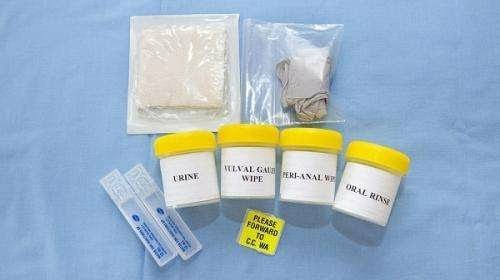- Dec 27, 2016
- 26,761
- 56,701
- AFL Club
- Western Bulldogs
- Thread starter
- Moderator
- #51
24th February, 2019
The Questions That Remain Unanswered
Why did Mr Edwards keep his job at Telstra after admitting attacking a woman at Hollywood Hospital while at work? Telstra declines to comment.
If Sarah, Jane and Ciara got into their killer’s car, did they do so willingly and did they fight back?
The court was told that on the nights Sarah Spiers and Ms Rimmer disappeared, screams were heard — but not in the Claremont area.
Does Mr Edwards have alibis?
Mr Edwards’ whereabouts and movements at relevant times will likely be key matters during the trial.
But Ms Barbagallo did reveal in court this week that Mr Edwards allegedly had no alibi on the night that Ms Glennon was murdered.
She told the court Mr Edwards had plans to go to a friend’s house in Dawesville that night in March 1997, but failed to show and didn’t appear until mid-morning the following day.
She said he claimed he had been trying to reconcile with his wife. “That was a lie,” she alleged.
Why are we hearing all this evidence before the trial?
It is rare for allegations against any accused person, in this kind of detail, to be in the public domain before a trial.
But this trial will be heard by Justice Stephen Hall alone, without a jury, and Mr Edwards’ defence did not proceed with a bid to suppress the publication of details discussed in the pre-trial hearing this week.
As a judge, Justice Hall is trained to put aside prejudices
Why did it take so long to lay charges?
The kimono. The Huntingdale fingerprints.
Those pieces of possible evidence were important factors in leading us to where we are today, five months away from Mr Edwards’ trial.
Cold-case police officers had the kimono that was left at the Huntingdale attack scene tested for DNA evidence and allegedly the profile they found matched the profile they had for the Claremont serial killer.
The Huntingdale case was reopened and fingerprints found at one of the prowling scenes matched Mr Edwards’ prints on the national database since the 1990 Hollywood Hospital attack.
Police then swooped and arrested Mr Edwards on December 22, 2016.
The 50-year-old has been in custody since.
The Questions That Remain Unanswered
Why did Mr Edwards keep his job at Telstra after admitting attacking a woman at Hollywood Hospital while at work? Telstra declines to comment.
If Sarah, Jane and Ciara got into their killer’s car, did they do so willingly and did they fight back?
The court was told that on the nights Sarah Spiers and Ms Rimmer disappeared, screams were heard — but not in the Claremont area.
Does Mr Edwards have alibis?
Mr Edwards’ whereabouts and movements at relevant times will likely be key matters during the trial.
But Ms Barbagallo did reveal in court this week that Mr Edwards allegedly had no alibi on the night that Ms Glennon was murdered.
She told the court Mr Edwards had plans to go to a friend’s house in Dawesville that night in March 1997, but failed to show and didn’t appear until mid-morning the following day.
She said he claimed he had been trying to reconcile with his wife. “That was a lie,” she alleged.
Why are we hearing all this evidence before the trial?
It is rare for allegations against any accused person, in this kind of detail, to be in the public domain before a trial.
But this trial will be heard by Justice Stephen Hall alone, without a jury, and Mr Edwards’ defence did not proceed with a bid to suppress the publication of details discussed in the pre-trial hearing this week.
As a judge, Justice Hall is trained to put aside prejudices
Why did it take so long to lay charges?
The kimono. The Huntingdale fingerprints.
Those pieces of possible evidence were important factors in leading us to where we are today, five months away from Mr Edwards’ trial.
Cold-case police officers had the kimono that was left at the Huntingdale attack scene tested for DNA evidence and allegedly the profile they found matched the profile they had for the Claremont serial killer.
The Huntingdale case was reopened and fingerprints found at one of the prowling scenes matched Mr Edwards’ prints on the national database since the 1990 Hollywood Hospital attack.
Police then swooped and arrested Mr Edwards on December 22, 2016.
The 50-year-old has been in custody since.











